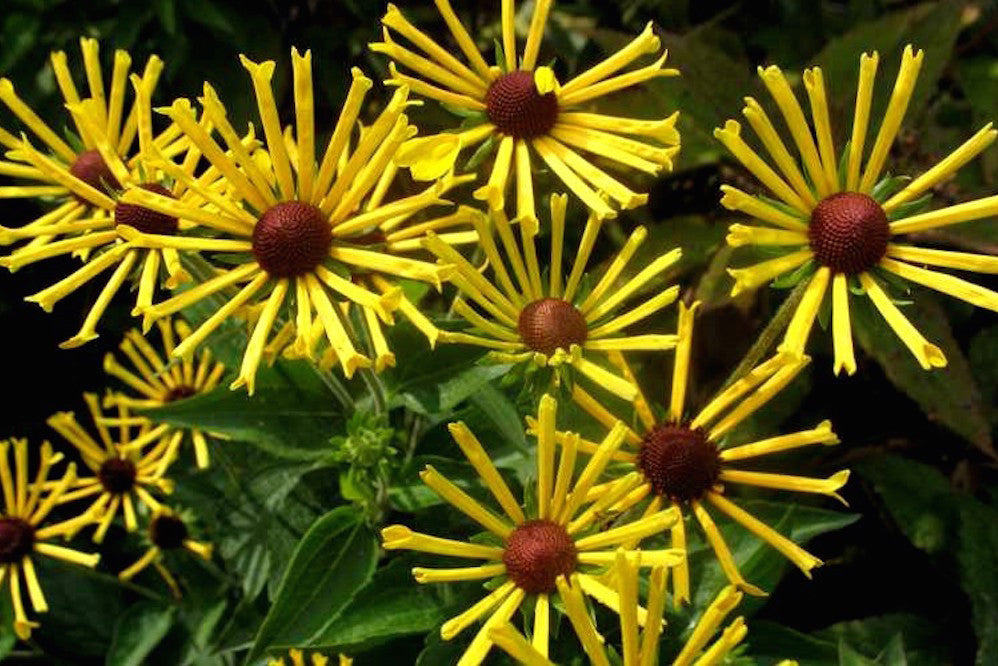Rudbeckia subtomentosa 'Little Henry'
Approx. 0.5 litre pot
About this cultivar:
Rudbeckia subtomentosa 'Little Henry' is 2013 introduction from Terra Nova nurseries. It is basically a dwarf version of Rudbeckia subtomentosa 'Henry Eilers'. Basically it is 2-3 feet tall instead of 3-5 feet....
Below is a description of the original 'Henry'....
Rudbeckia subtomentosa 'Henry Eilers' is a sweet coneflower cultivar that grows on stiff, upright, leafy stems. It was found growing in the wild in a railroad prairie remnant in Montgomery County, Illinois, USA. In general appearance, the flowers are very similar to those of R. subtomentosa, except the yellow rays are rolled instead of flat, giving the flower a quilled effect. Dome-shaped brown center disks. Flowers bloom in clusters atop strong, sometimes-branching stems. The foliage is dark gray-green in basal clumps with smaller unlobed stem leaves which have a mild sweet aroma.
The cultivar was discovered by Henry Eilers, a well-known nurseryman in southern Illinois, and was introduced by Larry Lowman of Ridgecrest Nursery and Gardens in Wynne, Arkansas in 2003
- Position: Full sun, partial shade
- Soil: Almost any soil, grows well in Ballyrobert
- Flowers: August, September, October
- Other features: --
- Hardiness: Fully hardy, grows well in Ballyrobert
- Habit: Clump forming
- Foliage: Deciduous
- Height: 60 - 90 cm (2 - 3 ft)
- Spread: 45 - 75 cm (1.5 - 2.5 ft)
- Time to full growth: 2 to 5 years
- Plant type: Herbaceous Perennial
- Colour: Green, black, yellow
- Goes well with: --
About this genus:
Rudbeckia (rood-bek-e-a) is a plant genus in the sunflower family (Asteraceae). The species are commonly called coneflowers and black-eyed-susans; all are native to North America and many species are cultivated in gardens for their showy daisy-like yellow or gold flower heads, some are even red or brown.
The name was given by Carolus Linnaeus in honor of his teacher at Uppsala University, Professor Olof Rudbeck the Younger (1660-1740), and his father Professor Olof Rudbeck the Elder (1630-1702), both of whom were botanists. Rudbeckia is one of at least four genera within the flowering plant family Asteraceae whose members are commonly known as coneflowers; the others are Echinacea, Dracopis and Ratibida.
Rudbeckia is a tough summer-flowering perennial grows almost anywhere that isn't full shade or a pond. It is a tough, low maintenance plant which makes it perfect for wet gardens. Where happy, Rudbeckia spreads into a slowly widening clump that gets more floriferous each year. Rudbeckia flowers attract butterflies and the seed heads are a favorite of goldfinches; and they look great in the autumn when the petals fall off.
As for partners, obvious ideas are grasses and other plants int he sunflower family (Asters, sunflowers etc). Try against dark backgrounds. Anyway, I think these look great anywhere.




